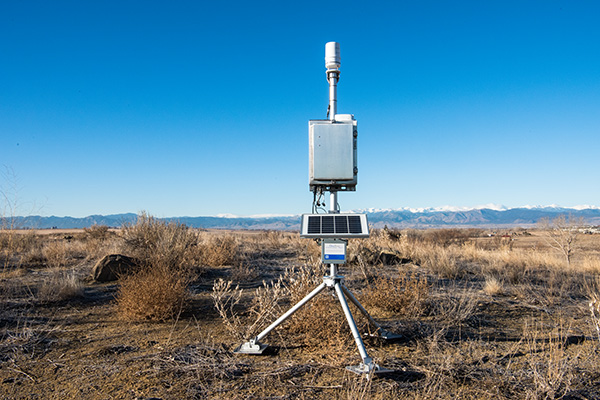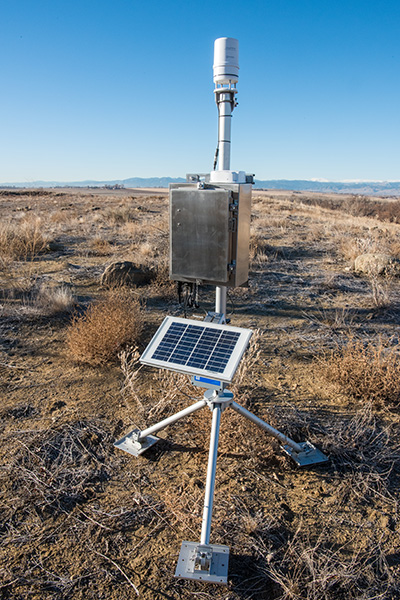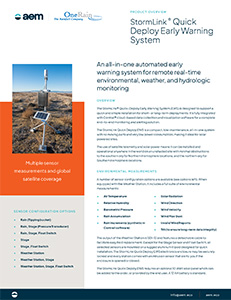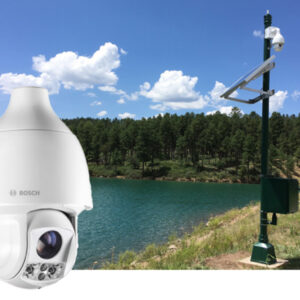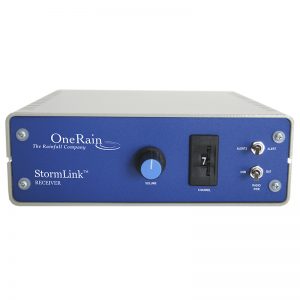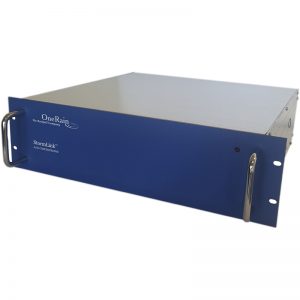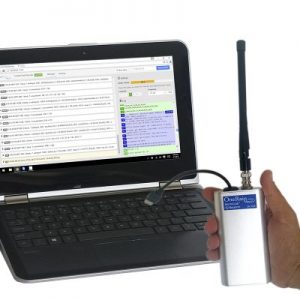KEY FEATURES
- Global network coverage. Data transmits data via OneRain’s turnkey StormLink Satellite solution.*
- Multi-sensor suite. Sensors are quick-connected (6 ports) and can be switched out as needed for each application. Sensor configuration can be changed by flipping the switches, with no reprogramming necessary.
- Fast and easy setup. The packaged station setup can be completed in as little as 20 minutes for short- or long-term deployments.
- Low power consumption. Powered by either a solar panel and battery, or an AC charger.
- Custom Alerts and Notifications. AEM Elements™ 360 software provides highly customizable user-defined alarm rules and SMS text and email messaging features that support decision-making criteria and EAP (emergency action plan) procedures and escalation processes.*
* Annual data and software subscription fees will apply
The StormLink Quick Deploy EWS is a compact, low-maintenance, all-in-one system with no moving parts and very low power consumption, making it ideal for solar powered sites.
The use of satellite telemetry and solar power means it can be installed and operational anywhere in the world on an unshaded site with minimal obstructions to the southern sky for Northern Hemisphere locations, and the northern sky for Southern Hemisphere locations.
Environmental Measurements
A number of sensor configuration options are available:
- Rain (Tipping bucket)
- Rain, Stage (Pressure Transducer)
- Rain, Stage, Float Switch
- Stage
- Stage, Float Switch
- Weather Station
- Weather Station, Stage
- Weather Station, Stage, Float Switch
When equipped with the Weather Station, it includes a full suite of environmental measurements:
- Air Temperature
- Relative Humidity
- Barometric Pressure
- Rain Accumulation
- Rain Increments (synthetic in our software)
- Solar Radiation
- Wind Direction
- Wind Velocity
- Wind Max Gust
- Invalid Wind Reports
- Tilt (to ensure long-term data integrity)
The output of the Weather Station is SDI-12 and features a detachable cable to facilitate easy field replacement. Except for the Stage Sensor and Float Switch, all selected sensors are mounted on a rugged aluminum tripod designed for quick installation. The StormLink Quick Deploy EWS electronics enclosure may be securely locked and every station comes with an intrusion sensor that alerts you if the enclosure is opened or closed.
The StormLink Quick Deploy EWS requires an optional 10-Watt solar panel which can be added to the order or provided by the end user. A 12 AH battery is standard.
Remote Unattended Real-time Weather and Environmental Monitoring
Housed in a rugged, weatherproof, stainless steel NEMA 4X-rated enclosure, the StormLink® Quick Deploy EWS is ideal for deployment in remote geographic locations or difficult terrains where cellular or IP is unavailable.
Mission-critical Connectivity and Guaranteed Data Delivery
Data from the station can be received by the monitoring software within 20 seconds of being collected and sent. A unique StormLink handshaking protocol between the satellite messaging terminal and AEM Elements 360 software guarantees data delivery. Messages are packetized and time-stamped prior to satellite transmission. The communications channel is two-way; data are buffered locally for possible retransmission until acknowledgment of correct receipt has been received. If acknowledgement of data receipt is not received by the satellite messaging terminal, it resends the information.
The StormLink satellite transceiver uses the L-band for communication and is thus not prone to rain fade during the very time when you may need your data the most.
